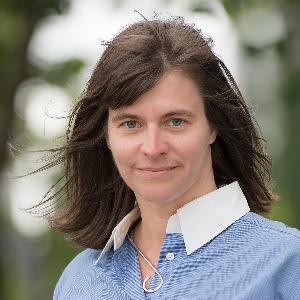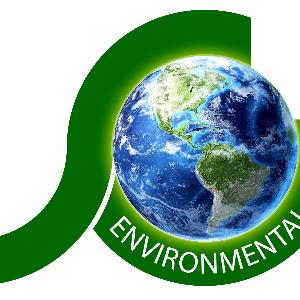 Betsy Agar Aug 19, 2017 03:50 | Thank you for attacking the remediation end of our fossil fuel habits. Regardless of our energy future, we have a lot of clean up to do already. Your project fits into a field known as Carbon Capture and Conversion, which really is the next evolution of CCS (Sequestration). CCC is of great interest to Carbon Management Canada and researchers at the University of British Columbia (Naoko Ellis is a good one to reach out to). I have a couple of thoughts on this, namely have you considered decoupling your CCC system from coal production?
I genuinely look forward to CCC resolving many of the issues that plagued CCS. |
 Sid Abma Aug 19, 2017 04:26 | Proposal contributor Hi Betsy Thank you so much for your comments. This past week I finally connected with Goran at cci.cmcghg.com Been trying since the start of the year. Myself and my CTO will be getting together with him at the Richmond facility early October. I am hoping to maybe even be it's first Carbon Capture test. America has been focusing at Carbon Capture from coal because it is considered to be the biggest CO2 contributor, so this is our first step. We are striving to earn BSER certification and help save a coal industry. Goran says we can also get tested on natural gas. We are looking forward to that as we will do as good removing CO2 out of natural gas as can be done with coal. As we were developing our Sidel CCU System we had a much bigger goal than just CO2. Our motto is "Waste is not a waste if it has a purpose". We want to later show lead and mercury and sulfur removal. I think Partho our CTO even has ideas about recovering the nickel and the chromium. The coal ash is also a big deal. It costs the power plants a lot to remove it. ESP's are expensive to install and operate. We have developed our Sidel Rotary Particulate Collector that costs much less to purchase and install, and only a fraction to operate. We also have a number of items that we want to transform this ash into, to generate more funds and more jobs. I am a Canadian and my son Mark Abma (youtube him) lives in Pemberton and has a business in Squamish. I contacted these guys last year when we were there with the CO2 from air handling units, but they were not able to make time to meet with us. Naturally our goal is to start this in North America, first on coal and then at natural gas. At these power plant facilities where possible we also want to apply our Sidel SRU Flue Gas Condensers and recover the heat energy out of the exhaust. At coal power plants we can utilize this heat energy to further process the produced bio-fuel into a secondary fuel that can be combusted alongside the coal in their steam generating boilers. At the natural gas power plants, where possible, I would like to have large ranges of commercial greenhouses constructed where we can use the recovered heat energy to heat and or cool these facilities, and pump the CO2 into these growing areas, providing these food bearing plants with CO2 enrichment. Again more full time jobs created and the world will never have to much food being produced. In 2014 we made a number of trips to Wash. DC at the DOE with the director of Clean Coal. At first he was quite excited about what we were proposing. We supplied to him our 36 page report proving how and why our technology works. Then we waited...6 months, when a Southern Company representative told us that due to budget cuts they would not be able to test our technology in Alabama at the National Carbon Capture Center. It took a while to figure out the the previous administration was all about CCS and at $70 plus/ ton (Kemper County) they wanted a technology that was so expensive that utilities would have to depend on big government to fund these projects. That way the government would control them. Our Sidel CCU System costs but a fraction of a CCS System to construct and we can remove the CO2 for less than $20 ton. We don't need 30% of the created energy to strip out the CO2. We do not need any steam and only a small amount of electricity. We will create many full time jobs in many sectors, from agriculture to transportation to the plants where our end products will be consumed. The benefit to the economy will be great and to the environment will be monumental. The products to produce our amine can be grown anywhere in the world and our earth based product is very likely available or it can easily be transported in. What if in the next 15 years over 90% of the CO2 produced at power plants around the world would not be going into the atmosphere any more. And then there is all the Water that is in this combusted fossil fuel exhaust. Ms. Carpenter at the IEA produced a document that stated that if just 20% of the water that is in combusted coal exhaust were to be recovered, the coal power plant could be self sustaining. At 40% it could be a water supplier to the local community. In every 1 million BTU's of combusted natural gas are 5 gallons of recoverable distilled water. This also is big! CCS works, but it is just very expensive to install and operate, and then to have to pipeline it away at a Million dollars per mile and then re-compress it to pump it down into the ground, and hope it stays there. Full time monitoring. We have resolved those issues. Have A Fantastic Weekend! Sid Abma |
 Michal Monit Sep 6, 2017 03:12 | Dear Sid,
|
 Sid Abma Sep 6, 2017 03:34 | Proposal contributor Hi Michal Thanks for your comment. Hoping to complete testing at a Carbon Capture Test Facility in the next 6 months. Then we will be wanting to do a 100 MW then 500 MW then 750 MW and larger and larger. We do not want to do just a single generator at a power plant but the full volume of exhaust. Have A Fantastic Day! Sid Abma |
